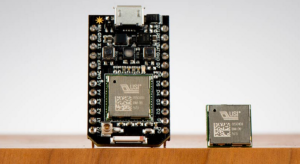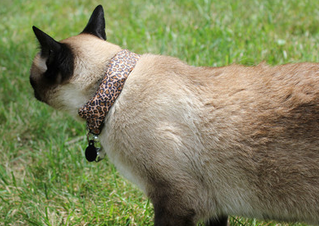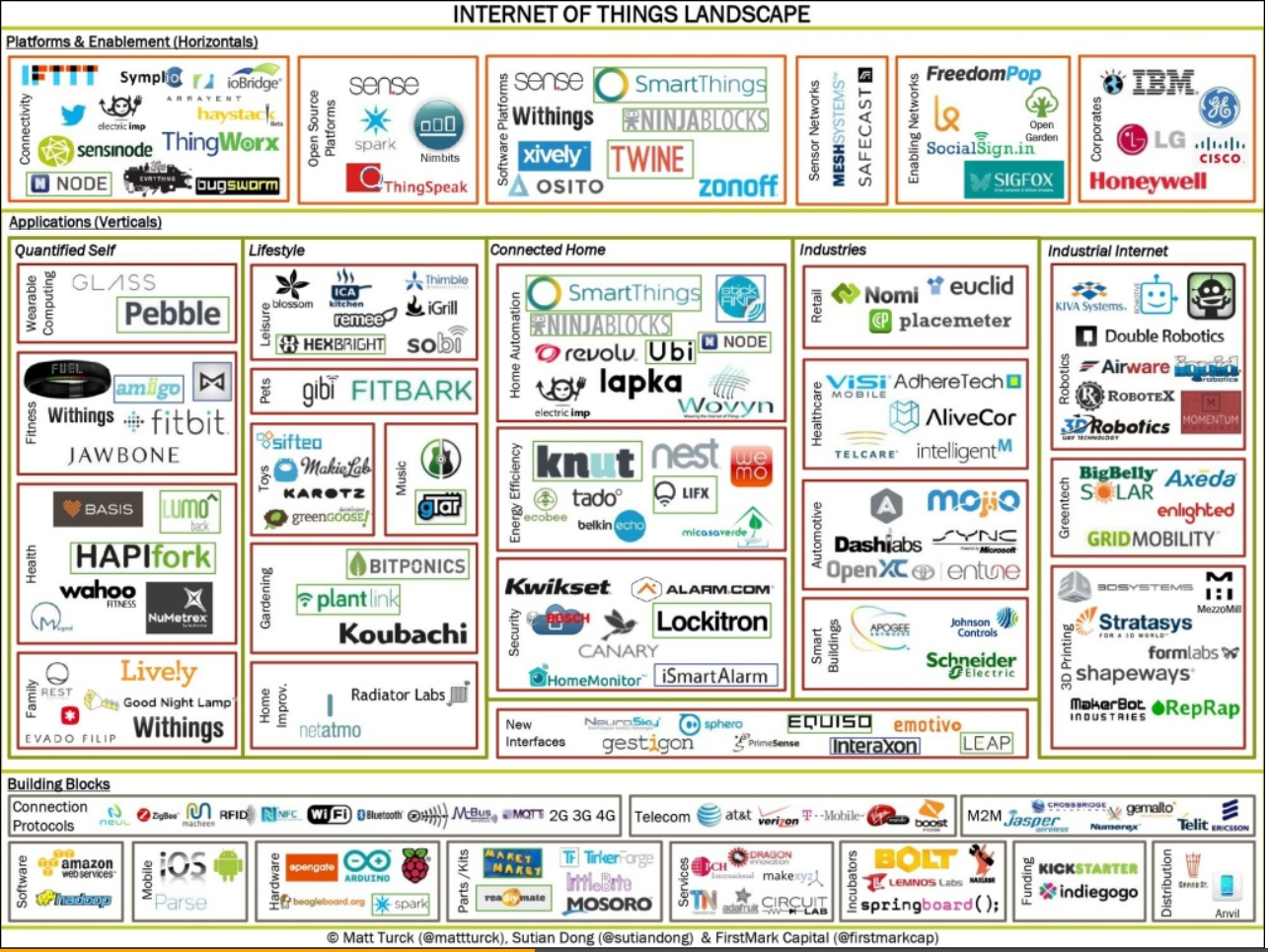
Hacking Your Way Onto the IoT

Elon “Ironman” Musk raised eyebrows recently when he said we are “summoning the demon” with artificial intelligence. While it’s debatable whether neural networks will give rise to evil spirits, a singularity of a different sort is clearly at hand when it comes to the Internet of Things, which is on the cusp of unleashing torrents of new data moving among consumers, devices, and device manufacturers.
If you thought the data you have been dealing with was big, then you’re going to be blown away by the amount of data generated in the near future, when billions of new connected devices come online and data flows increase by orders of magnitude. The first breakthrough IoT device was the Nest thermostat, which could “learn” your heating and cooling wants and needs, and then adapt to them. Now owned by big data’s Big Daddy, Google, Nest has morphed into a whole suite of home-automation products, and ushered in a host of copy-cats.
But the IoT movement is not relegated to the corporate suite, where industry giants like Google, Honeywell, and IBM seek to transform entire commercial sectors. The IoT is not just about Fitbit, Jawbone, and Nike Fuelband uploading health data. The IoT movement actually is taking root at a much lower level, where citizen hackers and enthusiasts are assembling unique creations for all types of tasks.
One of the vendors at the heart of the IoT hacker movement is Spark, a San Francisco startup that makes do-it-yourself IoT enablement kits that can be used to make just about anything a smart-connected device. Last week, Spark released Photon, a postage-stamp sized programmable Wifi radio that retails for $19 each.
Spark’s whole goal is to take the cost and complexity out of the process of turning regular devices into IoT-connected devices. “We want to the create the Android for the IoT,” says Zach Supalla, co-founder and CEO of Spark. “We want to provide that similar level of abstractions for people who want to create connected devices.”
You don’t need to know how to solder or program or work with low-level communication protocols to instrument a toaster, light bulb, or cat with a little Wi-Fi-connected controller, although it may help. There are thousands of cheap sensors and actuators available from sites like Radio Shack or Octopart, and connecting them is simply a matter of following the instructions. “If you’re talking about a pretty easy-to-use temperature or light sensor, the process of getting it hooked up and reading data off it can be 10 minutes,” Supalla says.
So far, Spark has been quite successful. Supalla started the company in late 2012 with a goal to raise $10,000 on Kickstarter. It ended up raising about $600,000, which it used to ramp up production of the first-gen hardware platform. Sales of that product, called the Core, have surpassed 30,000 units. The company has also raised more than $4 million in a Series A round of funding.
Spark is a real company now and hoping to help all of its customers–from hobbyists to consumer goods makers–ride the wave of big data and the IoT. In addition to providing the actual hardware with Photon or Core, it also provides the operating system (SparkOS), the development framework (Spark Dev), and the messaging bus.
But the company has bigger plans to help customers harness the data that its sensors generate. As Supalla explains, the data generated is gravy compared to the primary function of the smart device.
“If you’re a light bulb company and you want to make connected light bulbs, the reason you want to make connected light bulbs is you want to differentiate your product against other light bulbs out there,” Supalla says. “This is cool because you can control it from your phone, and the lights will turn on automatically when the sun goes down and they’ll flash when you get a text. But then once they’re connected, now you get all this data. So you learn all these really interesting things about your customers. How does it impact your business to have all this data? What can I do with it?”
For starters, you can learn exactly how your customers use your product, which you can use to support existing customers or target new customers. You can also use it to make a better product. “If you’re a coffeemaker manufacturer, what if you could improve the quality of the coffee the it makes by making a firmware change and then pushing that out over the air to all of your customers?” Supalla asks. “Now all of a sudden everybody who uses your product makes better coffee.”
Hackers have assembled a number of interesting projects with the Spark hardware, including WarKitteh, which turns your cat into a Wi-Fi detecting special agent (see pic at right); GardenSpark, which uses soil sensors to monitor conditions of your dirt; Wi-Fi connected motion sensors; and a Nest-like learning thermostat.
Another IoT startup that’s looking to help companies get a handle on device data is Buddy. The Seattle, Washington company pulls data off IoT-connected devices using technology like Apache Kafka, stores it to a database (using NoSQL technology), and then transforms the data stream so that it can be analyzed using a business intelligence tool such as those from Qlik or Tableau.
Buddy is in the first stage of its Series A round and already has customers around the world, including car manufacturers and audio-video stereo makers. As the company’s CEO Dave McLauchlan tells Datanami, the IoT-connected devices are already sending out reams of data, but companies are finding it’s difficult to get access to it.
“The vast majority of data generate by these devices has been made by companies who themselves aren’t big data or IoT companies,” he says. “They may have a fleet or a network of devices that are generating data. They say ‘Don’t give me more data. Just give me an understanding or ROI of the data I’m already generating.'”
For example an audio-video stereo could be instrumented to phone home to Buddy with data. “That AV device is connected and can now stream back to us on behalf of the company that makes it information about how it’s being used, what buttons are being pressed, what the Wi-Fi signal strength is, how much of time is it spent playing back Pandora versus AM radio versus Xbox,” McLauchlan says. “And so the manufacture of that AV receiver now has an incredible amount of info, not just about how customers are using the product, but if the customer calls up with a support inquiry, they can help that customer.”
It will take some time before smart devices becomes totally ubiquitous. After all, while you may buy a new smartphone every two years, the upgrade cycle for household appliances like AV receivers and washing machines is much longer. Things are moving a bit quicker in the industrial and commercial spaces, but the home automation aspect will take a bit of time.
In the meantime, the world is being rigged for the IoT, and the costs are dropping. Today, it costs manufacturers about $5 to $10 to add an IoT controller to a device, but in a few years it will be about $2 to $3, says Spark’s Supalla. By then, the company will not only have its own data visualization tools to offer customers, but support for cellular and Bluetooth radios with its hardware.
Related Items:
Big Data is the New Engine of the Internet
How GE Drives Big Machine Optimization in the IoT
How Fast Data is Driving Analytics on the IoT Superhighway

































